May 13th, 2021 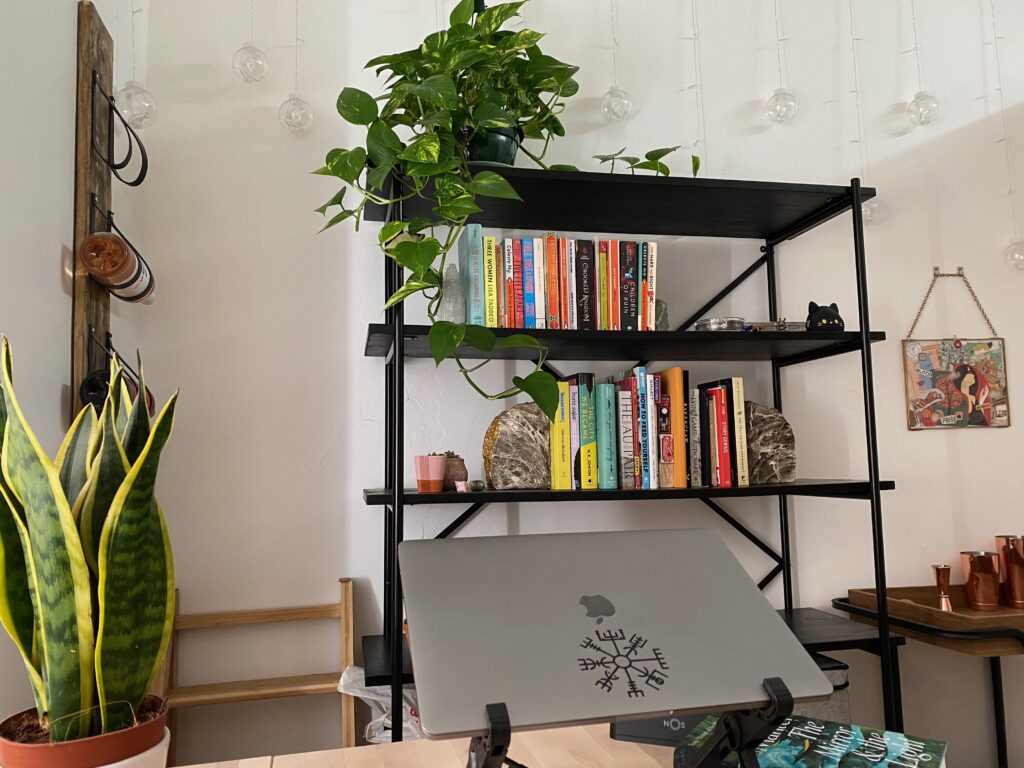 I have always prided myself on being a fast writer. My speed allowed me to begin writing full-time before my debut novel was published, thanks to a series of ghostwriting and work-for-hire gigs. Freelancing is a fast-paced, insecure world. I never knew when or from where my next paycheck will be coming, so I tended to say yes to everything, even when my schedule was flooded. I told myself it was fine. I liked working that way. I have always prided myself on being a fast writer. My speed allowed me to begin writing full-time before my debut novel was published, thanks to a series of ghostwriting and work-for-hire gigs. Freelancing is a fast-paced, insecure world. I never knew when or from where my next paycheck will be coming, so I tended to say yes to everything, even when my schedule was flooded. I told myself it was fine. I liked working that way.
In some ways, I truly did. It’s not just my writing that is fast-paced. I’m a high-energy person. I’m happiest when pursuing a goal—or better yet, 5-10 goals at once. I embraced the work-hard, play-hard mentality of my 20s, of New York City where I lived at the time, of the stage of my life where I was meant to be building things.
And, too, I enjoyed the new and disparate challenges freelancing offered. When you say yes to almost any project, you wind up writing about topics you never imagined would interest you. I learned I liked co-writing and ghosting, blending my style with other writers’, working as part of a team rather than solo.
Ghostwriting gets a bad rap, because readers sometimes feel those books don’t really “belong” to the authors whose names are on the cover. But in my experience, ghostwriting is highly collaborative. My best clients provide me reams of detail about the books they want—world-building, outlines, character descriptions. My job is to flesh out their vision before they polish the final edits.
I do not feel the same way about books I’ve ghosted as I do about my own stories. I can read reviews of books I’ve ghostwritten without any sense of either pride or cringe. I had a hand in those books’ creation, yes, but they belonged to other creators all along. I never minded. It felt like I had an extra layer of protection from the terror that comes with putting my own stories—my blood, sweat, and tears—out into the world.
But there are trade-offs, I have learned.
I’ve been writing full-time for years now at a frantic, sometimes breakneck, pace. And yet, the shelf where my own books sit looks fairly sparse.
Even before the pandemic, I had planned to change this in 2020. I had planned to slow down, to accept less work-for-hire, to focus on my own projects.
I got what I wished for, though as usual, not in the way I expected.
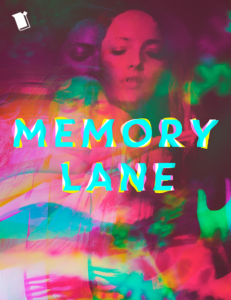 Last summer, I worked on my first-ever fiction podcast, created specifically for audio. With the Sara Shepard, no less! Season 1 of MEMORY LANE, a mother-daughter road trip thriller that we co-wrote, launched last month. This week it became a featured Apple Podcast. (The show is also available on Spotify and anywhere else you prefer to listen.) Last summer, I worked on my first-ever fiction podcast, created specifically for audio. With the Sara Shepard, no less! Season 1 of MEMORY LANE, a mother-daughter road trip thriller that we co-wrote, launched last month. This week it became a featured Apple Podcast. (The show is also available on Spotify and anywhere else you prefer to listen.)
In the fall, I started working on another fiction podcast, this time as the sole author. ELIXIR, a Prohibition-era inspired fantasy about two women falling into star-crossed love in a world of magical speakeasies and deadly mafiosos, launches on podcast platforms everywhere June 3rd.
A short story I wrote for the Hooked app, MORGAN’S SECRET ADMIRER, was turned into a short film.
RULE and RISE launched in French, with Bayard Press.
Some other projects I can’t yet discuss began to grow legs.
Still, it is difficult to shake the nagging sensation that I’m not doing enough. Not writing enough, not being visible enough, not posting enough. I don’t have projects in the pipelines where I’d always dreamed of building readers. I have no idea when or even if I’ll publish another YA book. I hope to, but there are days that well of inspiration feels so dry I have no idea how to fill it again.
In 2020, I backed off most social media platforms entirely, even as well-meaning (non-writer) friends texted: “at least you have plenty of time to write now!” Sure. But time alone =/= creative fuel.
I did get what I asked for, though. I slowed down. Wrote less words-per-month than ever in my adult life. Stopped chasing every single potential project, mostly due to sheer exhaustion.
It’s difficult for someone accustomed to sprinting to start to walk instead. At first, the voice in the back of my head was constant. Pick up the pace, stop slacking, work harder.
Over time, however, that voice grew softer.
It helped that Portugal, where I now live, has a much lower cost-of-living and a better sense of work-life balance than the US. The pay cuts still trigger a knee-jerk panic response, but I can talk myself off that ledge now, logically.
That little unsatisfied voice will probably always be there, in some form or another. But I am learning how and when to tune it out.
At the same time, in my day-to-day life, I feel calmer. I don’t want to say “happier,” because that’s such a fleeting state, but I am content. I exist in the present. I give myself more days off.
Some of those days I wind up riddled with guilt anyway, but more and more often, with practice, I’m able to step away from my desk without shame or anxiety. Because I know that tomorrow—or the next day, or whenever I’m ready—I will pick up the pen again. And when I do, my writing will be all the better for the time I took to breathe.
March 22nd, 2020 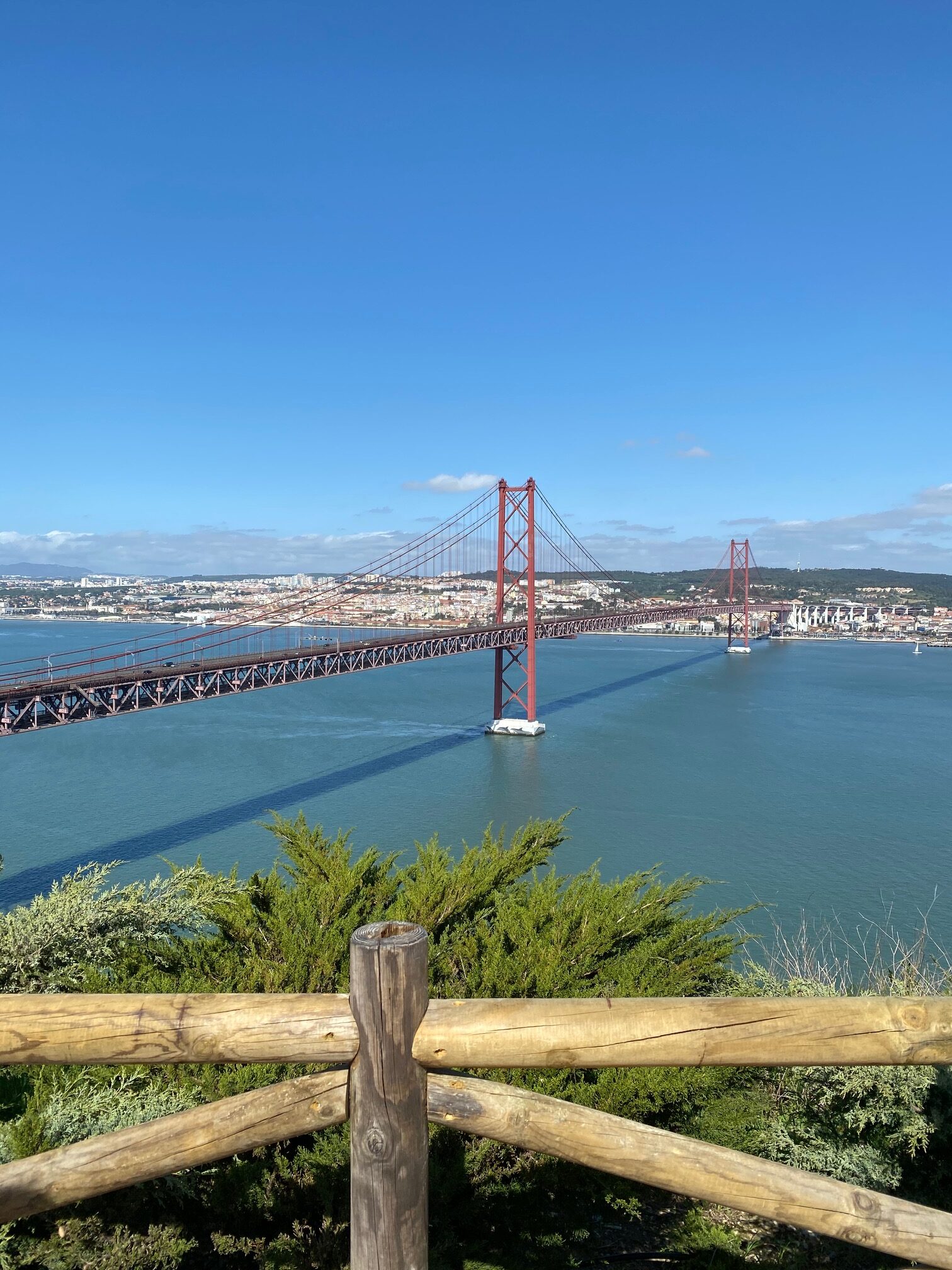 It doesn’t come up often in the perfect Instagram shots, the #livelaughlove tags, the cutesy captions. Even when I’m talking to friends back home in person, recounting my trips, I hardly ever bring it up. It sounds too much like a humblebrag, a lucky person problem. It is. I get that. It doesn’t come up often in the perfect Instagram shots, the #livelaughlove tags, the cutesy captions. Even when I’m talking to friends back home in person, recounting my trips, I hardly ever bring it up. It sounds too much like a humblebrag, a lucky person problem. It is. I get that.
But anyone who’s traveled often or for long stretches of time probably knows what I’m talking about.
Every new place you visit expands you. (We love to talk about that.) You stretch to contain these new experiences: music like you’ve never heard it, foods you’ve never dreamt of combining, fruits and spices you’ve never seen before. You fall in love with mysterious overgrown ruins, with a khao soi just the way one hole-in-the-wall makes it, with twisting medieval alleys, with white sand beaches that look like something from a catalogue.
Not to mention the people. Locals who welcome you with open arms, become new best friends. Travel companions you meet along the road, join forces with, look after for as long as your paths cross. Maybe even online friends you’ve talked to for years yet never met, who you’re finally in the same hemisphere as, and can embrace in person.
(The part we don’t talk about so much?)
Eventually, be it in a few days, weeks, maybe even months… you leave. And when you do, you leave pieces of yourself behind.
Shed skin cells, strands of hair. Slices of your heart and fragments of your soul.
Every time you leave somewhere, you die a little death. The life you lived in that place, in that moment, is gone forever.
But it’s fine, because you’re on the road, and for every yawning empty hollow that opens up in your chest, there’s a bright new beginning on the horizon. A new city or beach town or mountain villa waiting to steal your breath away. Waiting to show you, tantalizingly, what life might be like there, if you decided to stay.
You won’t. But you imagine it, for a time.
Over and over and over.
You grow used to living with your heart stretched wide open. You grow used to the fact that on any given day, at any given hour, if you let yourself think too hard about it, the grief and nostalgia, the missing of everything and everyone who isn’t with you right here and now, could consume you.
You crave food you’ll probably never taste again. You yearn for quiet little bars that have gone out of business, beaches now filled with trash, inside jokes that only a few people on the other side of the planet understand.
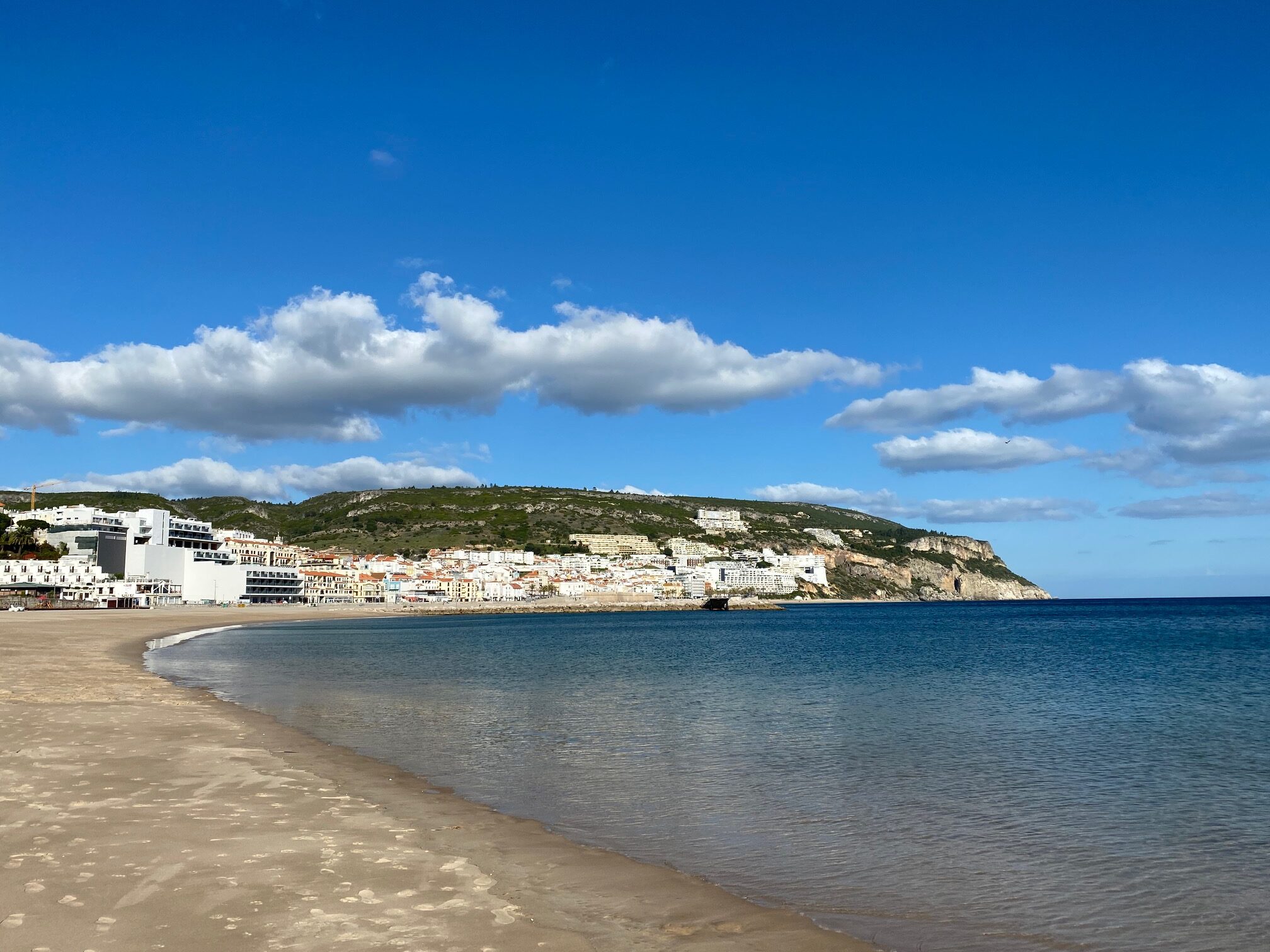 You get accustomed to missing ten people, none of whom have ever met or even heard of one another, at the same time—missing them so hard that “missing” barely encompasses the depth of it. It feels like being pulled in ten directions at once, until there’s nothing left over for you. You get accustomed to missing ten people, none of whom have ever met or even heard of one another, at the same time—missing them so hard that “missing” barely encompasses the depth of it. It feels like being pulled in ten directions at once, until there’s nothing left over for you.
Whenever that mood strikes, your usual remedy is to step out into the sunshine. To find new connections, new loves. To revel in the here and now.
But you don’t expect this.
Suddenly every single one of your thousand loves, dotted all across the globe, is in danger at once. Some more than others, yet all trapped in the same uncertainty, the same fear of the unknown; and you’re trapped too, in one place and one life.
Maybe it’s a new life you intended to choose anyway. Maybe it’s the life you were trying on for size when the curtain came down, when the borders shut and the airlines cancelled your flight. Maybe it’s a life you’ve been in for a long time, a place you’ve always called home. Maybe it’s comforting to be there, or maybe it feels suffocating now, like a shoe you’ve outgrown.
Maybe it’s all of those things at once.
Regardless, there can be no running anymore, no forward or back. We have been suspended in amber, our missed pasts and longed-for futures on indefinite hold. All we have is the here. The now. The life right in front of us.
All we can do is live it.
March 13th, 2020 In what feels like 5 years worth of breaking news compressed into a week, Coronavirus has officially been declared a pandemic, the entire NHL got suspended, Europeans can’t fly to the US for 30 days (but Americans living or currently visiting Europe can because, as we all know, our rabid patriotism makes us naturally immune to carrying viral contaminants across borders), and of course, blah blah something stock market blah (tbh I have no idea what the implications of that are, since I’ve never had enough spare cash to participate in societally-sanctioned gambling—err, I mean, The Market.)
Oh and PS, we’re all supposed to stay home as much as possible now.*
TO THAT END.
I have prepared a list of book recommendations to hunker down with while you’re trapped in the ever-shrinking four walls of your house. I’ve ranked them in order from “educational texts about all the dystopian issues we should be discussing right now” all the way up to “fluffy tales guaranteed to distract you from contemplating our imminent doom”:
Heavy Nonfiction (or, If You Think This Planet Is Fucked, Just Wait Till You Read These!)
The Uninhabitable Earth: Life After Warming by David Wallace-Wells
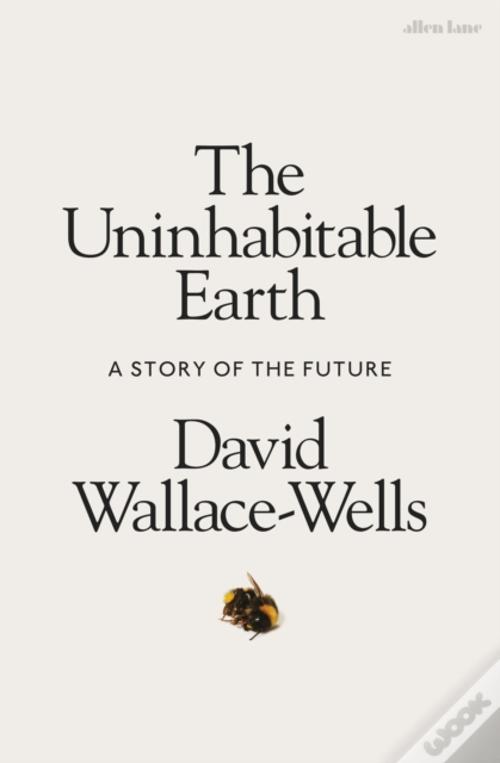 Look, I’ll be real with you: I had no less than 3 panic attacks within the first 120 pages of this book. It’s terrifying. But it’s also, even more scarily, very well-researched and nuanced. It does not talk about our climate future in terms of big Day After Tomorrow-esque scenarios. It takes a realistic approach: who will be the hardest impacted (spoiler: those communities, countries and economic groups that are already struggling). What could a world with the minimal degrees of warming we should expect look like (it’s not great!). How commonplace will natural disasters like the California fires, the increasingly large hurricanes battering the East Coast, etc. be (very). Look, I’ll be real with you: I had no less than 3 panic attacks within the first 120 pages of this book. It’s terrifying. But it’s also, even more scarily, very well-researched and nuanced. It does not talk about our climate future in terms of big Day After Tomorrow-esque scenarios. It takes a realistic approach: who will be the hardest impacted (spoiler: those communities, countries and economic groups that are already struggling). What could a world with the minimal degrees of warming we should expect look like (it’s not great!). How commonplace will natural disasters like the California fires, the increasingly large hurricanes battering the East Coast, etc. be (very).
This was a hard read, but such an important one. We need to face what’s coming. And this book takes a level-headed, realistic look at it. What made reading it so terrifying was that it did not sound like science fiction or a dystopia. It was easy to imagine. We’re already seeing some of it now, in fact.
That’s the problem.
Invisible Women: Data Bias in a World Designed for Men by Caroline Criado-Pérez
I wish I could magically implant the knowledge from this book into everyone’s minds with a snap of my fingers. I cannot stress how important a read this is, not just for the women out there, but for the men, too. Because if you’re a man reading this, I guarantee there’s at least one, if not many, women who you love in your life.
This book isn’t about raging against men, or complaining about women’s lot in life. It takes a deeply researched, very logical and straightforward approach to looking at the world we all inhabit, and the ways in which it has been designed, either accidentally, on purpose, or through sheer ignorance, to work against women.
Sexism doesn’t always show up as conscious bias (although sadly, it still shows up there frequently too). It doesn’t always look like physical violence or abuse (although that still happens very often as well).
Many times, the bias isn’t even something other people are doing to women. It’s just the way the world is set up. The way cars are manufactured, the way iPhones are designed, the way buildings are built, the way we talk and think about what’s work and what’s free labor (i.e. childcare). I like to think I’m pretty aware of the patriarchy and the ways it impacts my life, but a lot of the facts in this book startled even me. It never occurred to me to think “oh hey, you know how women can never open jars? It’s because the jars were designed to fit a man’s hand.”
1491: New Revelations of the Americas Before Columbus by Charles C. Mann
 I read this book almost two years ago and I have not stopped thinking or talking about it since. We all know by now (I hope) that Christopher Columbus was not the pioneering explorer we were taught to believe growing up, but rather a genocidal invader who destroyed whole civilizations in the process of robbing them blind to finance a greedy empire. I read this book almost two years ago and I have not stopped thinking or talking about it since. We all know by now (I hope) that Christopher Columbus was not the pioneering explorer we were taught to believe growing up, but rather a genocidal invader who destroyed whole civilizations in the process of robbing them blind to finance a greedy empire.
But what we still don’t hear much about in history classes or common parlance, are the civilizations that existed before the Old World arrived at the New (which, frankly, is a misnomer in and of itself). I thought I had a decent idea of American history, since I’d traveled through Central and South America, visited the pyramids at Teotihuacan, hiked Machu Picchu.
NOPE.
A TON of what we learn in history class is just plain wrong. A lie. Even our timelines of immigration to the so-called “New World” might be completely off. This book does a great job of blending thorough research with fascinating story-telling in order to give us the best possible picture we can sketch of the period in history before one half of the world was wiped out by the other.
(Fair warning, I sank into a deep depression for months after finishing this book, because it finally truly hit me just how much knowledge, culture, art, science and LIFE was lost when Columbus invaded the Americas.)
Light Nonfiction (or, Ok, Not Everything Is COMPLETELY Fucked)
Sapiens and Homo Deus by Yuval Noah Harari
I am convinced this man is either a genius or a space alien or both. Either way, his realistically optimistic(ish) perspective on the human species is both refreshing and well worth a read. Some of my favorite points of his: our modern political systems function the way religions did in the past. Money is an imaginary concept. Stories are what provided the bedrock for all of civilization to be created.
Can you tell why I like his writing?
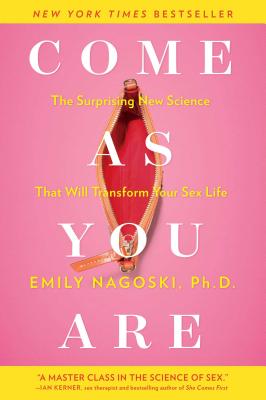 Come As You Are by Emily Nagoski Come As You Are by Emily Nagoski
Sex is not a dirty word. The female orgasm shouldn’t be so damn rare. We need to talk about what better sex looks like if we want to have it, or to encourage others to enjoy it. This is a great, inclusive read that takes a look at female sexuality, and how many factors that we don’t normally associate with sex play into it.
The Order of Time by Carlo Rovelli
This one made my head hurt, but in a good way. Written by a theoretical physicist who also spins poetry-worthy prose (because being a theoretical physicist wasn’t impressive enough on its own, I guess), it’s one of the first books I’ve read that helped me actually visualize a lot of the theoretical concepts I’ve heard batted around about our universe.
Also, this lead me to the conclusion that it’s fucking batshit any of us or this planet exist at all. What the hell.
Fiction So Good It’ll Make You Question If You Should Bother To Even Try Writing Anything, Ever
Gideon the Ninth by Tamsyn Muir
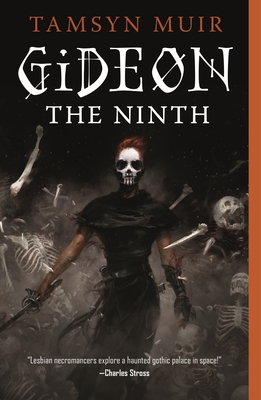 Lesbian necromancers in space. That’s all the pitch you really need. This book was by turns hilarious, razor-edge-level witty, gut-wrenching, and downright ridiculous. I loved every fucking page, and to say I’m dying to get my hands on the sequel is an understatement. Lesbian necromancers in space. That’s all the pitch you really need. This book was by turns hilarious, razor-edge-level witty, gut-wrenching, and downright ridiculous. I loved every fucking page, and to say I’m dying to get my hands on the sequel is an understatement.
But if I do die, someone have Harrow revive me to read it ok, thanks.
This is How You Lose the Time War by Max Gladstone and Amal El-Mohtar
I loved Max Gladstone’s Three Parts Dead (basically fantasy lawyers), so I was looking forward to this one, and it 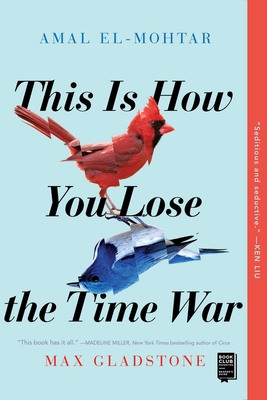 did not disappoint. did not disappoint.
It’s novella-length, so a quick read, but damn do the authors pack a compelling romance into a few pages. It follows two rival time-traveling agents bent on destroying one another’s factions. Save your bullshit oh, they don’t like each other at work but are forced to work together on a project stories—THIS is how you do enemies-to-lovers, my friend.
A History of Glitter and Blood by Hannah Moskowitz
 Glitter. Faeries. Cannibalism. An extremely fucked-up world with even more fucked-up characters violently carving out space for joy and peace and love amidst the wreckage. Glitter. Faeries. Cannibalism. An extremely fucked-up world with even more fucked-up characters violently carving out space for joy and peace and love amidst the wreckage.
I devoured this book whole and yes that is a cannibalism reference, don’t worry about it.
Oh and PS it’s super gay. Like however gay you’re thinking, multiply by a gazillion. Love to see it.
The Fever King by Victoria Lee
Couldn’t write a list of books to read during a pandemic without including this one, about a boy who becomes the sole survivor of a viral outbreak that killed his family—and, oh yeah, the virus also granted him magical abilities.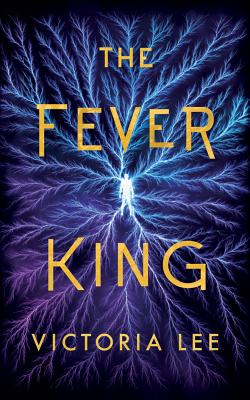
This might hit a little too close to home at the moment, or it could be cathartic to read about how after his illness, Noah’s real story begins. He’s recruited to work for his magic-powered government; a government he deeply distrusts, since he is the son of undocumented immigrants and he spend his life protesting the government’s treatment of them. But maybe this will prove the perfect opportunity to bring his country’s leaders down from the inside…
Girls Forced into Arranged Marriages with the Same Guy But They Fall for Each Other Instead
Ok, there are only two books in this category, but the fact that there is more than one and that I love them both and this is my new favorite trope really says something positive about the state of queer rep in YA these days.
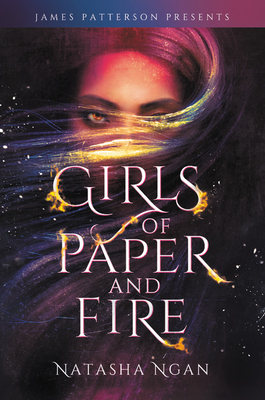 Girls of Paper and Fire by Natasha Ngan Girls of Paper and Fire by Natasha Ngan
A girl in the most persecuted class in her kingdom is stolen from her family and made to join the group of eight girls who will serve their cruel king. Fair warning, this book gets real about sexual assault, the harm it does, and what it takes to survive it (and how everyone does that differently).
It’s also a poignant, butterfly-inducing, heart-racing portrait of two girls falling head-over-heels in the kind of love they write books about.
We Set the Dark on Fire by Tehlor Kay Mejia
This book really tackles the expectations and restrictions we place on girls. In Mejia’s world, there are only two kinds of fem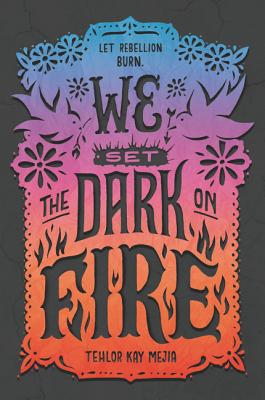 ales: emotional, sexy, passionate ones, and level-headed, logical, Type-A ones. ales: emotional, sexy, passionate ones, and level-headed, logical, Type-A ones.
Every man who comes of age is awarded one of each, in marriage. But are the two girls really so different? And is it right how little control they have over their own lives, or how much their husband wields over them?
This book is a slow slide into a terrifying finale that will leave you breathless—not to mention dying for the sequel, which lucky for you JUST CAME OUT so you don’t even have to wait!
Fluffy and Fun
Don’t let anyone call these guilty reads, because there’s no guilt when it comes to books! But with all the heartache and stress going on in the world right now, we could all use some lighthearted fiction in our lives, so:
Get a Life, Chloe Brown by Talia Hibbert
 After a chronically ill computer geek narrowly avoids death, she decides to make a list of all the badass things she wants to do to in order to, well, Get a Life. After a chronically ill computer geek narrowly avoids death, she decides to make a list of all the badass things she wants to do to in order to, well, Get a Life.
Enter the “Red” Morgan, the handyman in her building: he’s got tattoos, a motorcycle and a dangerously attractive grin. But he’s also probably her best bet if she wants help accomplishing the bad-girl to-do items on her list.
Red and Chloe’s chemistry is off the charts, and their fun, twisty romance will definitely keep you distracted from counting how many rolls of TP you panic-bought yesterday.
The Gentleman’s Guide to Vice and Virtue by Mackenzie Lee
Set in 18th century England, this story follows the roguish son of a gentleman as he embarks on his Grand Tour of Europe. 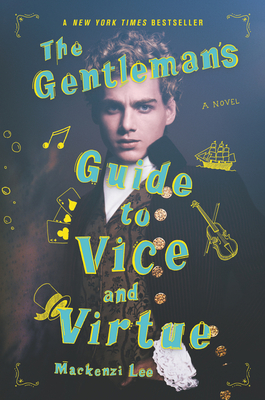 Afterward, he’ll have to return home and take over his father’s estate. But before that, he’s determined to have as much fun drinking, gambling and romancing his way across the continent as possible. And if it gives him more time to flirt with his best friend and traveling companion, a boy he’s been hopelessly in love with for years, well, all the better. Afterward, he’ll have to return home and take over his father’s estate. But before that, he’s determined to have as much fun drinking, gambling and romancing his way across the continent as possible. And if it gives him more time to flirt with his best friend and traveling companion, a boy he’s been hopelessly in love with for years, well, all the better.
There’s alchemy, there’s a chaos bi and his cinnamon roll best friend, there’s a whip-smart but annoying younger sister tagging along… and of course, a caper that pisses off the wrong person, and a manhunt that stretches from Paris to Venice.
Perfect way to travel in spirit, when we can’t venture outside!
Remember: if you do buy any of these, please consider ordering from your local indie bookstore, or via Indiebound, since local & small businesses will be the hardest hit by this period of economic slow-down.
What books are you hunkering down to quarantine with? Any suggestions? <3
* Yes, self-quarantine sounded like an extreme reaction to me too, until I started reading about how overwhelmed the hospitals in Italy are getting. I’m fortunate enough to be young(ish) and healthy, without any prior respiratory issues, so I would probably (*knock on wood*) be all right if I caught the virus. But many people wouldn’t be, and the more hospitals are flooded with patients, the less they can help each individual patient, which leads to rising death tolls. We’ve got to think about more than just ourselves, right now. Think about your parents, your friends’ parents, your grandparents (no no, not the racist ones, the nice ones who bake you cookies). Think about your friends or family members with compromised immune systems. If you can help avoid putting them in more danger by staying home (and if your job allows), do it.
February 27th, 2020 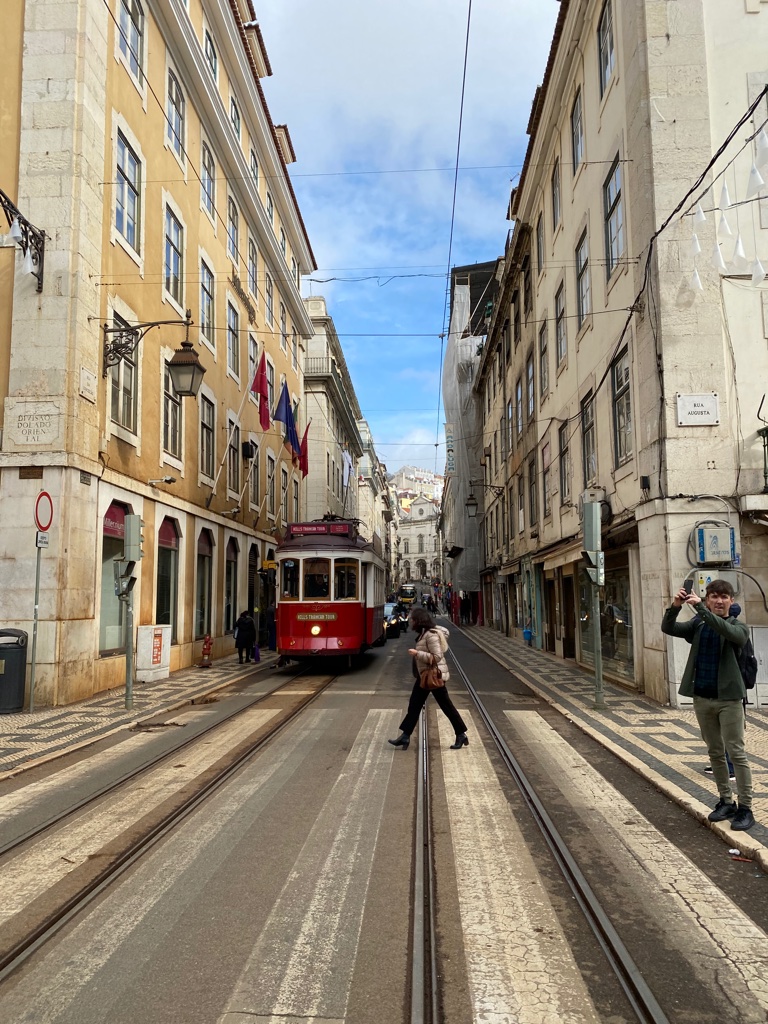 Everyone I’ve talked to lately, whether before, during or after my transcontinental move, keeps asking me why. “Why do you want to live in Lisbon?” I have a few different answers, but mostly I just wind up asking a different question altogether. Everyone I’ve talked to lately, whether before, during or after my transcontinental move, keeps asking me why. “Why do you want to live in Lisbon?” I have a few different answers, but mostly I just wind up asking a different question altogether.
Specifically: “why would I want to stay in the United States?”
Wanderlust aside, I have some big issues with my country of origin.
Healthcare
I’m freelance, so I pay out of pocket for this back home. In my native state of Pennsylvania (where I moved after I returned to the US from traveling because I took one look at out-of-pocket premiums in my former residence of NYC and promptly fainted), this comes at the tune of around $300/month, which doesn’t even factor in my deductible (for the non-USians out there, this means the money you have to pay out of pocket before your coverage starts to, well, cover things. Yeah.)
And I’m LUCKY, because I’m relatively young, able-bodied (AKA able to find a cheaper premium than many people), and I have family to live with in a city with a pretty good medical system all things considered (heyo, Pittsburgh).
“Aren’t you worried about healthcare abroad?!” ask many USians I’ve talked to. To be fair, they often have no personal experience with healthcare systems outside the US, and they have been fed a heap of BS about how we might pay a premium in the good ole US of A, but it’s for great doctors, better care, etc. etc. (We really want to believe we get what we pay for, I guess?)
To them, I point out: the US healthcare system ranks 37th place globally. Portugal’s is #12. In another case study focused on analyzing the healthcare provided by 11 high-income nations, the US simply ranked “last.”
For cost comparisons, the average American spent $10,586 for healthcare in the year 2017. The average Portuguese citizen spent $2,681.
This was honestly the hardest thing for me about coming back to the US. Even just while traveling (my travel health insurance, which covers about what catastrophic does back in the US—emergencies, death, dismemberment—costs $67 a year), I did not have to worry about healthcare costs.
I didn’t do extensive math to make sure I could afford it before going to the doctor. I didn’t wonder if bystanders should call an ambulance when we saw a guy hit by a motorcycle because he might not have coverage (ok so I did but then non-USian friends pointed out that wasn’t an issue there). Just… it’s not a thing. And it really improved my quality of life, not harboring that invisible fear.
Cost of Living
Average consumer prices in Lisbon are around 50% lower than in NYC. Lisbon costs are up to 69% lower when it comes to rent (nice).
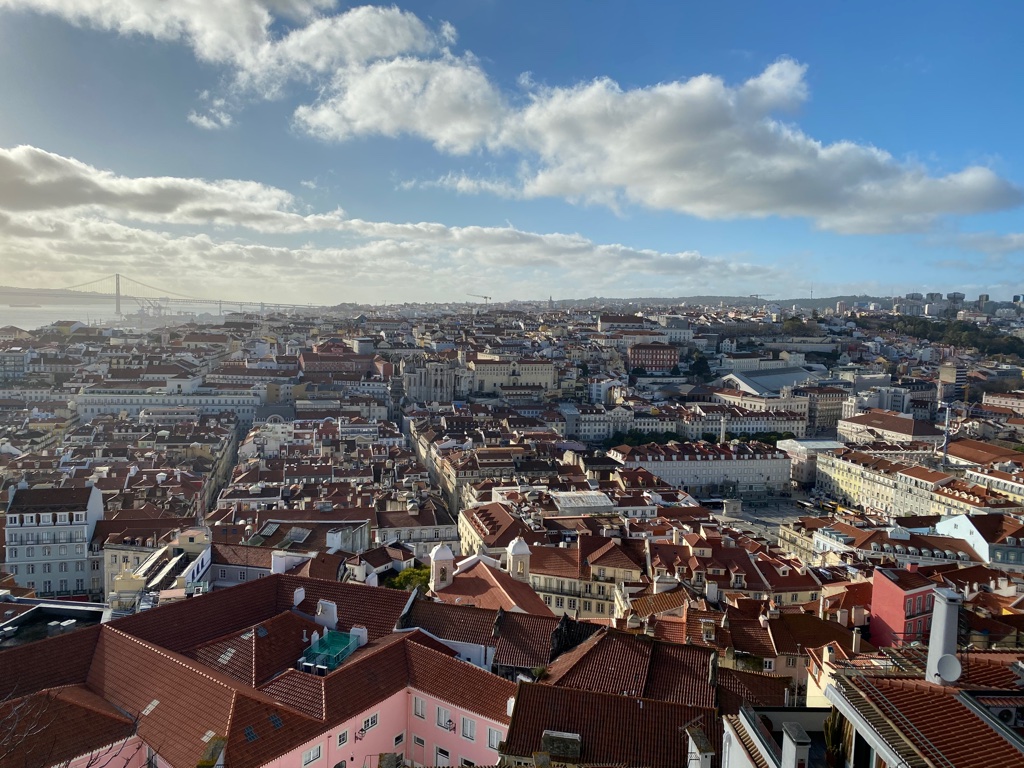 Okay, fair enough, you may say, but that’s just because NYC is one of the priciest places anywhere. Good point. Okay, fair enough, you may say, but that’s just because NYC is one of the priciest places anywhere. Good point.
So let’s take Pittsburgh. You know, my hometown where everyone’s been moving because of all those HuffPo articles about how cute and affordable it is (agreed!).
Average consumer prices in Lisbon are still 32% lower than in Pittsburgh. Rent in Lisbon is 26% cheaper on average.
Also, did I mention that I’m freelance, and that writing books does not pay nearly as well as movies about writing books make it seem?
(To my non-publishing peeps: I love you, but please stop saying “JK Rowling!” when I say writers don’t make a lot of money. That’s like me telling you “Some people win the lottery!” if you tell me you need a raise at work.)
Safety
This comes up a lot. I don’t know if I should blame hyped-up media shows, clickbait articles, lack of personal experience, or just the fact that unfamiliar elements are generally scarier to humans than known quantities. But whatever drives it, so many people I talked to before I left the US expressed concern for my safety.
After all, America is the First World! Everywhere else is… Scary question marks?? I guess?
I’ve got some bad news for you, America: you are dangerous, too.
In 2016, the US ranked second-highest in the world for number of gun deaths per country. Per capita, we had the 28th-highest rate of deaths by gun violence in 2017, with 4.43 deaths per 100,000 people (that was higher than anywhere in North Africa or the Middle East that year, btw, though a much lower rate some of Central and South America).
I had trouble even finding recent stats for Portugal, but the 2014 data showed 0.2 homicides by firearm per 100,000 people (this isn’t factoring in suicides, but still).
Hell, in the US there are more guns than there are people. Around 120.5 guns for every 100 citizens.
Sure, there are places in the world more dangerous than the US. American citizens are lucky in many ways to be born where we are. But every time I leave home to travel, I inevitably receive a flood of concerned messages about my safety. I get it, worry is normal. But do me a favor and research these places. Actual statistics, not memes some guy named Bob shared to a pro-Confederacy FB group.
Because a lot of times, if you actually look at the data? It’s the other countries who should be scared of US.
Ease of Travel
Not only are inter-European flights wayyy cheaper even than the bargain basement budget flights we have in the States (you can catch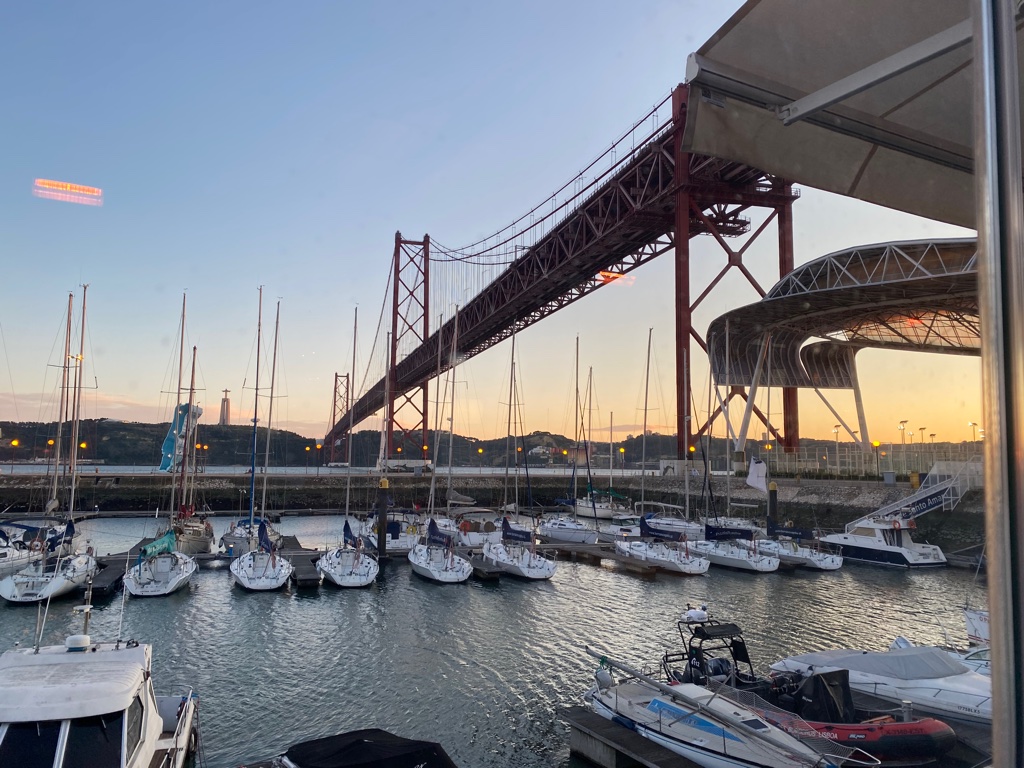 international flights for $20 sometimes. What. That’s what I paid to take a NJ Transit train like 1 hour into New York City), but there’s also (GASP) a functional train system. One that’s actually comfortable to ride. Okay, sure, it’s no Japanese bullet-train, but the sleeper cars are a million times comfier than trying to nap on the repurposed bus seats Spirit fills their planes with. international flights for $20 sometimes. What. That’s what I paid to take a NJ Transit train like 1 hour into New York City), but there’s also (GASP) a functional train system. One that’s actually comfortable to ride. Okay, sure, it’s no Japanese bullet-train, but the sleeper cars are a million times comfier than trying to nap on the repurposed bus seats Spirit fills their planes with.
Not to mention, almost all European cities have public transportation. (ILY Pittsburgh, but one train line and a few severely reduced bus routes is NOT SUFFICIENT.) I can be in another country in the time it would take me to drive from one side of PA to the other. Not even gonna get started on how many borders I could cross if I drove a whole Texas-length east.
SO, all of that factored together, and considering the fact that I can do my job from anywhere… I don’t see a good reason to stay in the United States. (Okay, friends and family, but my new plan is to just badger them all into visiting me instead. GET READY EVERYONE I hope you like egg custard tarts and salted cod. We’re gonna eat so much cod.)
As for why Lisbon specifically? That’s got to be a four-way tie between the sunny weather, the great food, the friendly people, and the chance to completely butcher a whole new language!
(Seriously though, this accent is killing me. I don’t think my mouth works that way. … Shut up.)
February 27th, 2019 I’ve got some really exciting book appearances coming up this spring, so if you’re in any of these cities at the right time, please come and say hi:
March 23rd @ 1pm
Local Author Signing
South Hills Village Barnes & Noble
Pittsburgh, PA
April 11th @ 7pm
In-Conversation with Tracy Banghart (author of Grace and Fury)
Trident Booksellers
Boston, MA
April 12th @ (time TBD)
In-Conversation with Tracy Banghart
Books of Wonder Downtown
New York, NY
May 3-4th
YALLWest
Santa Monica, CA
(With a ton of other amazing authors)
And of course, all that is leading up to June 11th, when RISE comes out (and all your questions finally get answered). GET HYPE! (Sorry, I’ve had a lot of caffeine today.)
(But seriously. Much hype.)
September 6th, 2018  Holy crap you guys. Holy crap you guys.
So this year has FLOWN by, and somehow (I suspect time portals were involved) it’s already September, which means that as of my writing this, in just 5 days, Rule is going to be on shelves. (Side note: this also means Amazon is offering a pre-order discount for these next few days—32% off hardcover!)
AHHHH.
To say I’m freaking out is an understatement. My (10+ year) path to publication has been a roller coaster to say the least, and even this year, which contains a lot of highs, has come with its own unanticipated challenges.
But, while I do want to talk about those at some point, especially with the discussions that have come up lately on YA Book Twitter(TM) about transparency (something I do think the book world needs more of), I want to just take a post to share SOME NEWS. Because STUFF IS HAPPENING, all of which I’m super excited about. I feel really ridiculously grateful to be where I am right now.
So, without further ado, some EPIC STUFF:
Thing #1: Rule and its sequel are going to be published in Spanish, French and Portuguese (in Brazil)!
YOU GUYS I am sooo excited about this. It’s a HUGE deal to get a book translated into another language (let alone 3!!), and I’m beyond ecstatic. The linguistics nerd in me is really looking forward to this—translation is an art form in and of itself, since lots of phrases/words don’t directly translate from one language to another. You have to take the essence of a sentence/word/turn-of-phrase and then recreate it in another language which is some mind-boggling magic, IMHO (that’s right, translators = wizards, spread the word).
Thing #2: Book 2 is turned in!
And phew, if I thought Rule had a tight turnaround timeline, I was NOT PREPARED for this.
Mix a healthy dose of sophomore book anxiety with the need to tie up a million loose ends in a plot line you can’t change anymore (since the first book is already out there in the world), and add a few gallons of desperate desire to do book 1 justice, and yup, not gonna lie, writing this sequel nearly broke me.
BUT IT’S DONE, and I’m loving how it turned out. In retrospect, I am really glad we pushed to finish it so quickly. Even if it was difficult, the last thing I’d want to do is leave readers cliff-hanging for too long. (See, I do have a heart! … Maybe…)
Thing #3: Reviews have been mostly positive!
Publishers Weekly wrote a really nice feature, and even Kirkus wasn’t too hard on Rule (plus, they make a good point that I wish I had considered sooner in the writing process about the blood magic system and how it may be triggering with regards to self-harm).
Professional reviews aside, it has been overwhelmingly cool to see people reading the galley copies and reacting to it, experiencing the world and the characters. When I was in high school, whenever we had long bus rides for marching band/football games/field trips, I used to pass around a printed-out copy of whatever novel I was currently working on* and then sit reading along in my own copy. I lived for those moments. Every time someone new read my book, it felt like I was living the story all over again, but with fresh eyes, because the story had grown. The world I wrote had expanded to include the readers, too.
This feels like that, times about a million. Inner High School Ellen is freaking. out.
Thing #4: I’m having a launch party!
If you’re in the NY area, I’d love to celebrate Rule‘s book birthday with you!
Stop by WORD Brooklyn on Wednesday, September 12th from 7:30-8:30PM to see me and the peerless Zoraida Cordova talk about all things books. And speaking of books—if  you like young adult fantasy with complex, badass heroines, dangerous magic, and a vividly-drawn alternate NY, you haaaave to read her Brooklyn Brujas series. I was already in love with the first book, Labyrinth Lost, but the sequel Bruja Born was stay-up-all-night addictive. you like young adult fantasy with complex, badass heroines, dangerous magic, and a vividly-drawn alternate NY, you haaaave to read her Brooklyn Brujas series. I was already in love with the first book, Labyrinth Lost, but the sequel Bruja Born was stay-up-all-night addictive.
If that’s not enough to entice you, there will also be snacks (including some vegan-friendly ones), tea and Rule-themed hummus. Also wine if you’re so inclined.**
Thing #5: I’m going to New York Comic Con!***
For anyone attending NYCC this year, I’ll be on the “All the Feels” panel (Saturday October 6th from 2:45-3:45PM), talking about what makes us feel so deeply for characters, especially in a world where many of us are experiencing emotional exhaustion from daily life.
Come for the conversation! Stay for watching me speak publicly for the first time since participating in a high school science fair.****
Lastly
Thank you all for reading/supporting/commiserating/celebrating. You’re the best.
<3
* written by hand and then typed up in my dad’s home office on our lone desktop computer DON’T MIND ME JUST DATING MYSELF
** and of age, because #laws
*** at this point Inner High School Ellen has just fainted, she’s out cold over there on the floor, don’t mind her
**** cue nervous laughter
July 2nd, 2018 Here we go, the finale of my answer to the question “Which city was your favorite?”
In case you’re still catching up, check out Part 1: South America and Part 2: Europe, where I recap pros and cons of each of the cities I lived in last year.
As you can probably tell by how long this blog series has gotten, picking just one favorite city has been impossible. There are so many things I loved about each place—and some things that were difficult about each one too.
In this final installment, I’m covering the pros and cons of the Asian cities we lived in. Here we go:
PROS AND CONS OF SOME CITIES IN ASIA
Kuala Lumpur, Malaysia
Pros:
- Nominated for Best Street Food in the World by everyone who has ever been here ever
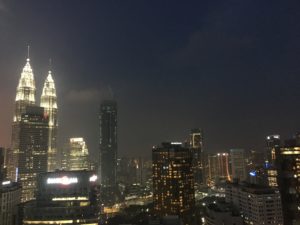 these are all malls
- Speakeasy-style bars are also a big trend here (like they were in Buenos Aires), and I’m still a fan, except for that one time our friend went into a brothel by accident because the speakeasy was a little too hidden
- Buddhist temples in Chinatown a couple blocks from a huge Hindu temple, and mosques everywhere, playing the call to prayer over loudspeakers through a rainstorm and it is shockingly beautiful, I might have cried
- The best coconut ice cream in the world
- Basically the super-affordable version of Singapore
- It’s a modern city so you can find all the weird drug store stuff you didn’t realize you needed and which Europe doesn’t carry for some reason (look I love Europe but sometimes looking for recognizable skincare/healthcare/grocery store brands there feels as futile as asking your 90-year-old grandma how to work your iPad)
- INFINITY POOLS
Cons:
- Durian, otherwise known as The Devil’s Fruit (I’d describe my first time trying durian as “like eating a cup of vanilla yogurt while sitting on a port-o-potty in which a body is decomposing”)
- Durian stench, which permeates the streets at night, as corpselike rivulets of The Devil’s Fruit flow downstream from the nearest ice-cream stand
- Heat + humidity = sweat in uncomfortable places
- Alcohol is crazy expensive and mostly crap
- You live in a mall
- Your office is in a mall
- All the tourist attractions are in malls
- The best restaurants in town are in mall food courts
- There is no real world any longer, there is only mall
- Mall.
Chiang Mai, Thailand
Pros:
- ELEPHANT SANCTUARIES (THEY’RE JUST LIKE PEOPLE OMG. They have best friends and hold grudges and push their punk-ass kids into the nearest stream when they’re acting up)
- Cooking schools (but you’ll never be able to recreate this dish anywhere else because you will never find produce like you get in Thailand ever again, holy shit it’s amazing here)
- Coffee shops (mostly in the digital nomad-y area we lived in, but there were so many great ones!)
- Weird workspaces (in a treehouse! in a pool! yes, literally in it!)
- Some of the warmest, friendliest, most welcoming people we met anywhere, and the locals who kindly put up with us being completely unable to communicate in any meaningful way
- BEAUTIFUL TEMPLES EVERYWHERE
- Gorgeous mountain drives through rice patties
- Night bazaars that make it feel like you just stepped straight into a YA fantasy novel
- Khao soi, otherwise known as the Nectar of the Gods. The best curry on the planet (is it a curry? I don’t even know. Whatever it is I ate it every single day we were in Thailand)
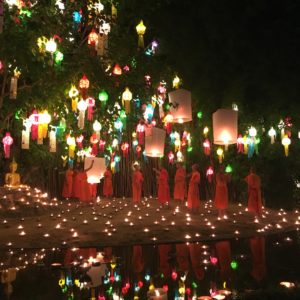 do not attempt this lantern thing yourself. seriously. Cons:
- Elephant riding—DON’T DO THIS. DON’T RIDE THEM. THEY’RE SUCH BEAUTIFUL INTELLIGENT CREATURES AND RIDING THEM HURTS THEIR BACKS IRREPARABLY ok I’m done
- But really
- Scooters/motorbikes will definitely hit you at least 10x
- Traffic is nuts
- Pollution is similar, so good luck breathing while you idle in said traffic
- But don’t even think about walking, the sidewalks are even worse than Mexico City. This time not only are they made of holes, but most of them are rented out as billboard ad space, so there’s giant signs in your way all the time! (True story) (And don’t get me started on the telephone lines you have to duck, while climbing over said billboards)
- Sex trafficking is a thing, and there are a lot of ways tourists support this industry, whether knowingly or not, and you definitely need to educate yourself at the very least on how not to accidentally buy into it before you go
- So much plastic waste. So. Much.
Kyoto, Japan
Pros:
- SO CLEAN. I once spilled ketchup on the street and tried to mop it up with my napkin because I felt so guilty, true story (also, there’s a rule against eating on the streets for exactly this reason, I apologize Japan)
- The best train system I’ve ever seen (they issued a nationwide apology one time when a train left the station 20 seconds early)
- I was right. Peeing here is a magical experience.
- Kobe beef is the best thing I have ever put in my mouth, yes I know exactly how that sounds, no I do not care, IT’S ALL TRUE (also whatever tf crap we have in the states labeled “kobe” is just not, I promise you)
- Fire ramen. ‘Nuff said.
- Sake.
- Strong Zero (think Four Locos, but available in a vending machine on street corners)
- Michelin starred box ramen from 7-11, and 7-11 food in general (another area in which the US seriously needs to up our game)
- Free beer happy hour in our workspace, which was a lifesaver because we sure could not afford Japan-life after, well, everywhere-else-life
- Extremely well-organized tiny-house-like apartments (a con for some, but I loved my weird shipping container solo pad!)
- Beautiful historic temples and the old geisha district to walk around
- Basically a country built by and for introverts
- Tiny little bars that look like hoarders’ living rooms nestled beside the lit-up river, offering cozy warm havens against the December chill in the air
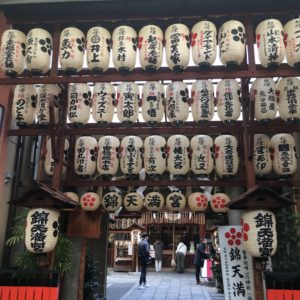 average walk to work
Cons:
- Trying to cram 56 clingy foreigners upset about the approaching year’s end into those tiny hoarder living room bars
- There are A LOT of rules. Which is great, but also terrifying, so study up before you go unless you want strangers to cross their arms at you in a big X all the time (yes, that’s where that emoji comes from, and yes, being X-ed makes any social anxiety you may already have peak instantly)
- Expensive. Like, more so than NYC in many respects.
- Not enough time to see everything (but then, an entire lifetime in Japan probably wouldn’t be enough!)
That last con applies to everywhere we went, actually. After a month in each city, I feel like I know them just well enough to know exactly what I want to do when I get back there. And I will definitely be back. Soon.
In the meantime, one last BONUS MONTH. When our year ended in Japan, most of our Remote Year cohort couldn’t quite say goodbye yet. A lot of us headed over to Bali for month 13, and I couldn’t leave it off this list, because as it transpires, between a side-trip we took there from Kuala Lumpur that lasted longer than intended (we all skipped our flights home), and this post-RY visit, I wound up spending more time in Bali than any of our official RY cities.
So, just to be thorough, the pros and cons of:
Bali, Indonesia (Ubud & Canggu mostly)
Pros:
- So. Chill. Granted, we showed up during rainy season with monthlong hangovers from our final farewell in Japan, and pretty much all of us decided the minute we set foot in Bali that we were doing Drynuary (or in my case, Drynuary+Drybruary+Dryarch—ok I see why only Dry January gets abbreviated now…), but still. There’s just something in the air from the second you step off the plane in Bali that urges you to relax
- Super friendly, welcoming locals. Everyone we met couldn’t have been nicer, like the lady who ran the homestay where I lived and checked on me in genuine concern when I slept for 14 hours one day (see above re: Japan hangover)
 normal office views
- The beaches, the jungles, the temples, the infinity pools overlooking rice patties and mountainsides, it all looked Instagram-perfect
- The rain—people told us not to visit in rainy season, but I loved the torrential jungle thunderstorms. It’s the kind of rain that leaves you unable to step half a foot outside your house without getting as drenched as if you’d jumped into a pool. It’s also the perfect excuse (“sorry I stood you up, but it was pouring, I’m going to go take a 12-hour nap instead, did I mention the monthlong hangover?”)
- Cacao ceremonies
- New moon volcano parties
- Cults (join rival ones and feud with your friends!)
- Booching (it’s like Icing, but instead of hiding a Smirnoff Ice in your friend’s stuff, you hide a kombucha)
- Best. Vegan food. Anywhere.
- Jackfruit (funnily enough a relative of Durian The Devil Fruit)—it’s my new favorite fake-meat, and jackfruit poutine is everything I never knew I needed in life
- Yoga Barn—50 acres of yoga classes, vegan buffets and juice cleanses
- Ecstatic dance parties (all the insanity of a rave, all the sobriety of church)
- Lazy poolside workdays followed by lazy late night tarot card readings
- More surfing
- Basically just turning into a hippie stereotype
- One last chance to catch up with all the awesome people you spent a year with, which was just enough time to realize you’ll never have enough time with them
Cons:
- Scooters. They’re pretty much the only way to get around. But every single time you climb onto one you are DEFYING DEATH (or in my case, speeding straight toward it while I crash into all the other bikes in the parking lot)
- Bali belly (let’s just say, I never wanted to know exactly where an individual piece of food I just swallowed is in my digestive system for its entire rushed trip through my small and large intestines, but now I do)
- Juice cleanses (your liver already “cleanses” your digestive system for youuuu also, I assume I contracted Bali belly twice as punishment for my making fun of our friends who did try juice cleanses)
- Living in a bubble again (Ubud in particular felt almost as “digital nomad”-bubble-y as Medellín, and Canggu and Seminyak are chock full of Australian bachelor parties. It creates a weird divide between real Bali and the image of Bali that gets shared on Instagram/social media)
- All the plastic waste, which is a huge problem for little islands like Bali that don’t have the infrastructure to clean it up yet (there are some groups and local businesses working on alleviating this! But it’s going to be a long hard road toward a fix…)
- Saying goodbye. To the year, to my new travel-family, to that chapter of my life. It was really damn hard.
But you can’t open new doors without closing old ones first. And as amazing as our year was, it worked because Remote Year was a finite period of time, a moment when we could all hold our breaths and postpone the more tedious, difficult aspects of life for one year.
Now we’re done holding our breaths. Now it’s back to reality. But somehow, after a year of hitting hard-reset on my brain, I feel readier than ever to tackle the difficult things, the things I put off last year—personal-growth things, work things, fighting the US government things, or even just boring tasks like getting my taxes in order.
Maybe it’s because after a year (and a couple months) of solid adventure, I’m ready for the adventure of real life.
June 30th, 2018 As you might have seen in part 1 of this post, I’ve been getting asked one question in particular a lot since my return: Which city was your favorite?
After last year, I think I have as many favorite cities as foodies do favorite bougie restaurants, so I’ve just given up on ranking them and made pro/con lists instead. Part 1 covered my favorite South American cities. Part 2, this post, details my favorite European spots. And next time, part 3 will cover the Asian cities we visited.
So here goes part 2.
PROS AND CONS OF SOME EUROPEAN CITIES
Prague, Czech Republic
Pros:
- IT’S SO DAMN PRETTY
- Seriously, it’s like living in a postcard of medieval Europe but without all the disease and hygiene problems
- It’s very walkable (or so I hear, I was on crutches the whole time sooo)
- On a related note, paying out-of-pocket for unexpected healthcare services was surprisingly cheap, easy, and reliable (here’s side-eying you, USA)
 the Vltava river
- The beer (and I don’t even LIKE beer)
- Honey (beekeeping is a huge thing and I love it??)
- Affordability (after Buenos Aires this was a HUGE RELIEF—and also surprising for such a big European city and popular tourist spot)
- Did I mention how pretty it is? Our workspace was literally a castle. Even the weird dorm-like housing we lived in was clean and shiny and a weird mix of modern and Communist-block-style that somehow felt homey
Cons:
- I could not communicate at all. But if you know some Czech or even Russian, this will be less of a problem
- People in general seem less overtly friendly than in South America. For me, this was actually a relief (I don’t always want to have a 20-minute chat just because we’re sitting next to one another on the subway, sorryyyy), but others were put off by it at first
- Touristy (yes, I know it’s ironic to complain about this as a tourist, but more so than anywhere else we lived, the tourist zones felt very fabricated)
Belgrade, Serbia
Pros:
- Super affordable (on the local Uber knockoff, CarGo, which sounded like it was probably named by the designer’s toddler, it cost about ~$5 USD max to get from one side of town to the other. I had to use this a lot since, still on crutches)
- Giant hippie fairy bar on top of a fortress
- Outdoor raves in said fortress, which led to a lot of hungover mornings-after at said hippie fairy bar (their beanbag chairs were great for lying on the floor while dying of a hangover and pitifully sipping ciders)
- Riverfront pools/beaches/bars
- Inexplicably great sushi restaurants
 morning-after in said bar
- “The nightlife in Belgrade is basically Berlin in the 90s” – my friend who is 1000% cooler than me and whose judgement I trust implicitly
- Cool as hell old architecture
- Super cool locals who adopted us and took us to all the best bars
Cons:
- World’s most depressing zoo
- Heatwaves
- Lack of air conditioning in many old houses
- Lack of elevators and prevalence of hills made crutching around very difficult (but this was a very specific me-problem)
- Not a ton of stuff to do outside of partying and poolside lounging (which is, I realize, the most non-complaints of complaints)
Valencia, Spain
Pros:
- Looks like Antoni Gaudí and Art Nouveau had a lovechild, and its name is Santiago Calatrava (if you’re a NYer, he’s the guy who designed the Oculus at One World Trade)
- Perfect weather, especially when we were there in September
- Gorgeous Mediterranean beaches
- Parks for days
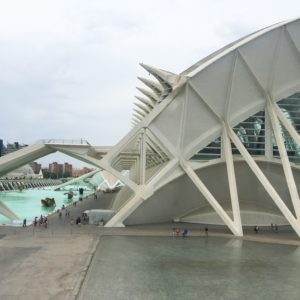 Calatrava buildings: pretty but leaky
- Museums for days
- Like all of Spain, the $2 wine in the grocery store is phenomenal. The $6 bottle will blow your mind
- I could understand Spanish again (again, me-specific, because I learned European Spanish, but it was SUCH A RELIEF especially after 2 months in countries where I knew exactly none of the local language)
- The produce oh my god
- The fresh fish oh my god
- So many cute coffee shops and cafes
- So many weird bars with creepy baby doll heads as decoration—wait, no, just one of them, but still
Cons:
- Ate at a restaurant where all the dishes were made from canned seafood and it basically tasted like cat food, and this was not not par for the course in the Valencian restaurant scene (shut up I know I am a snob now I’M SORRY REMOTE YEAR DID THIS TO ME)
- Price-wise we were definitely in Western Europe again (although Valencia wasn’t as costly as somewhere like Barcelona or Florence, I did have to start penny-pinching more than in Eastern Europe)
- Healthcare was pricier than in Prague (but still RIDICULOUSLY AFFORDABLE, EVEN PAYING OUT OF POCKET I am looking at you again USA, with increasing disbelief. Like… this is a rant for another time but WHY DOES BASIC MEDICAL TREATMENT COST LITERALLY 20 TIMES MORE IN AMERICA THAN ANYWHERE ELSE AUGH*)
* I know why sorry that was rhetorical fuck our healthcare system the end
 look when you have to be on crutches you might as well glam it up There’s part 2 of our year, our three months in Europe. Stay tuned for part 3, pros and cons of the cities we visited in Asia!
June 28th, 2018 Ever since finishing Remote Year, I’ve been asked the same question over and over: Which city was your favorite?
This is akin to asking an author what her favorite book is. I can’t answer it without at least 1 hour of your time and a PowerPoint presentation.
So, in lieu of owning a working copy of PowerPoint, I made a pros and cons list for each of the cities I lived in last year, to answer this question in a more succinct way than the hours-long rambles I’ve been delivering to my poor beleaguered friends. And since this list turned out to be not THAT succinct actually, I’ve broken it into 3 parts: South America, Europe, and Asia.
So, here goes part 1.
PROS AND CONS OF SOME SOUTH AMERICAN CITIES
Mexico City, Mexico
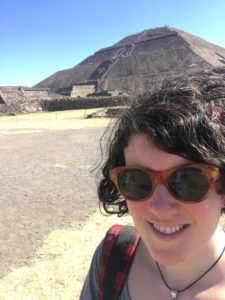 Sup Teotihuacan? Pros:
- THE FOOD (everything from the 15 cent street tacos up to the 19-course tasting menu at one of the top 10 restaurants in the world was incredible)
- Affordability
- Mezcal is the best alcohol since whiskey
- So much history, between the pyramids, the anthropology museum, the walking tours through DF…
- DID I MENTION THE FOOD (TACOS AL PASTOR. TAMALES. ELOTES. CHILAQUILES. TORTAS. MORE CHILAQUILES. DID I MENTION TACOS YET. TACOS.)
- Micheladas and clamatos (where have these been all my hungover life??)
Cons:
- Pollution/air quality (if I thought Pittsburgh in the 90s was bad, I had no idea…)
- Sidewalks are more hole than sidewalk
- The water isn’t potable, which makes staying hydrated difficult (though that might also be the mezcal’s fault TBH)
- That’s it end of cons
Bogotá, Colombia
Pros:
- The nightlife is truly unbeatable (it helped that Despacito was blowing up the month we lived here – no not the Justin Bieber version GTFO)
- Weird shit to do (for example, tejo, the popular lawn game where you drink cases of beer while throwing rocks at explosives buried in mud; or chivas, which are party buses that drive around blasting music while you drink aguardiente – did I mention the nightlife?)
- Weird shit to see (for example, the salt cathedral, a giant cathedral carved out of salt; salt Jesus, a big statue of Jesus carved out of salt; the salt mines… you get the picture)
- Hiking (close to the city too!)
- Gorgeous countryside
- Views from Monserrate over the city that are truly unbeatable
 View from Monserrate Cons:
- The food (arepas are disgusting, sorry not sorry, and if I never eat trucha again it will still be too soon)
- Aguardiente (a type of liquor I would describe as the jaeger bomb’s less classy cousin)
- Hangovers from aguardiente
- Air quality/pollution (I thought it was better than Mexico City, but other friends disagreed—it depended how close you lived to any of Bogotá’s city parks)
- Pickpockets (especially when out enjoying the aforementioned nightlife)
Medellín, Colombia
Pros:
- Even weirder shit to see (for example, Pope John Paul II Airport, now a waterpark in downtown Medellín; or Pablo Escobar’s old bombed-out mansion, now a paintball park)
- Bougie cafes (in the very digital-nomad-bubble-y neighborhood of El Poblado)
- Street art (arguably some of the best in the world)
 The artist & his work
- Aguardiente (yes I know this was a con in Bogotá but by this point you’ve been brainwashed and it tastes like nostalgia rather than regret and tin cans)
- Living in a jungle (HOW COOL IS THAT)
- Watching firsthand as a city with a very recent, very difficult past reinvents itself using a combination of brilliant city infrastructure planning and sheer compassion is truly awe-inspiring
- The beer (microbrewing is up-and-coming in the city and it’s AMAZING also some of it has secret weed in it fair warning)
Cons:
- The safer neighborhoods feel like a bubble. I’d walk around for an hour and hear only English, French or German
- Living in a jungle (your clothing will NEVER BE DRY AGAIN)
- The coffee (sadly, all the best Colombian coffee gets exported – though there are some local shops trying to change this!)
- The food/drinks (WHY IS EVERYTHING SO SWEET. WHYYYY)
Lima, Peru
Pros:
- Ceviche (eat it alllll)
- Pisco (don’t drink it alllll because it will murder you after 1 cocktail)
- Fine dining (Central & Maido were two of the best meals I’ve ever had, for a quarter of the price of what that caliber restaurant in NYC costs)
- Sunsets to die for
- SURFING, my new addiction
- Sleeping (seriously, I don’t know if it’s the sea breeze, LA-esque weather or the relaxed pace of the town, but even the biggest insomniacs in our group slept great here)
- Ecosystem diversity (from the beaches around Lima to the desert oasis town a mile away where you can sand-surf dunes; from the Peruvian side of the Amazon rainforest to the cloud forests of the Andes, you’ll never run out of new terrain to explore)
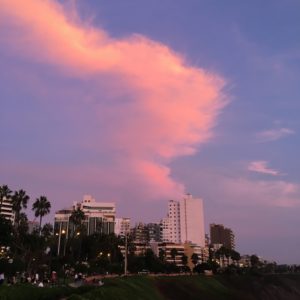 Lima sunsets Cons:
- You’ll want to spend so much time exploring Cusco (and the Inca Trail and Machu Picchu), Huacachina (aforementioned oasis town with dune buggies and sand-surfing) and Iquitos (the Amazon), you’ll miss out on Lima
- Nightlife (maybe we were just burned-out after 2 months in Colombia, but things seemed more chill this month—and the going-out spots we did find weren’t in the best neighborhoods to visit late at night)
- The sidewalks (this is definitely a me-problem but THEY WERE SO SLIPPERY I COULD BARELY WALK. probably fine if you’re a normal human with functioning balance, though)
Córdoba, Argentina
Pros:
- Hot people (literally everyone in Argentina is gorgeous)
- Gauchos (Argentinian hotness with all the sometimes-problematic masculinity of USian cowboys
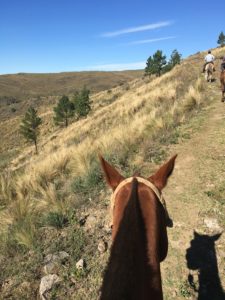 Playing cowboy in the Sierras
- Everything around Córdoba (horseback riding through the Sierras, camping in the Sierras, visiting a cool German-style village in the middle of Argentina, renting an Airbnb in the distant suburbs, basically any way we could leave Córdoba…)
- Nightlife if you are a 21-year-old college student, I guess
- Feeling like you’ve stepped through a time portal into mid-1990s Europe (PLATFORM SHOES ARE BACK. PAY PHONES ARE A THING. CASH-ONLY ECONOMY. NO FUNCTIONING ELEVATORS wait ok maybe some of this is farther back than the 90s…)
- Creepy decaying park that is probably the setting for a post-nuclear-apocalypse video game (some people might call this a con, but I genuinely enjoyed wandering around it at night envisioning dystopian near-futures. You know. Good preparation.)
- You’ll learn how to cook because there are no good restaurants
- You’ll start exercising out of sheer boredom
- Really good produce actually, and tons of farmer’s markets!
- Fernet and coke (if you like bitter liquor and buckets full of a drink guaranteed to make you forget where you are, this will be your jam)
Cons:
- Nightlife if you are not a 21-year-old college student. Córdoba is 90% bars, and of those, 90% are grungy clubs that open at 1am, close at 7am, and only serve flavored vodka shots and Angostura bitters they poured into an empty whiskey bottle in order to pretend they still had whiskey, probably
- Random shouting parades in the middle of the street at 4am on a Tuesday
- No sound-proofing whatsoever on any windows
- The only food anywhere within the city limits is pizza. But that pizza has been made by someone who has only ever heard vague rumors of this mystery dish, never seen one in person. It consists of a Chicago deep-dish style crust, no sauce, more cheese than even I (a consummate dairy-addict) can handle, and a single green olive. Every time.
Buenos Aires, Argentina
Pros:
- More hot people
- Oh thank god, good restaurants again, so I can stop living off of farmer’s market vegetables and get back to ruining my body
- Asado, Argentina’s answer to Southern BBQ (FYI American South, Argentina is winning)
- Speakeasy-style cocktail bars are enjoying A Moment in BA, and it’s The Best Moment
- Fernet (seriously, I just don’t hate it—it’s like jaeger but without the gross licorice aftertaste)
- Sexy accents (Argentinian is to Spanish as Scottish is to English; aka, THE BEST but also I could not communicate with anyone besides close friends who spoke slowly for the gringa)
- Nightlife (all the action, excitement, and 7am closing times of Córdoba, but now with sound-proofing on our windows and residential neighborhoods where you can escape said excitement)
- Theatrical shows (the nickname “Paris of South America” was floated a few times, and I can see it. BA reminds me of NYC, or London, or Paris—it’s a big, vibrant, cosmopolitan city, and it shows)
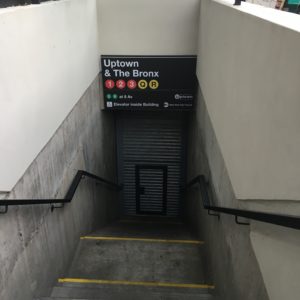 not a NYC subway stop, but a BA speakeasy Cons:
- Cash-only economy (for such a big city, this is hard to adjust to. It also means that every time the ATMs are restocked you have to wait in a blocks-long line at whichever one has any cash left, and then take out as much as you possibly can at once)
- The weather (learn from our mistakes, don’t go in June. It feels like NYC in November but without any of the excitement or decor leading up to Christmas. … So maybe more like NYC in January or mid-Feb)
- The price tag (this was the most expensive city we visited in South America, and second only to Japan in price all year. Our wallets definitely felt the pain)
Phew. So that’s the first half of our year. Check out part 2 for pros and cons of the European cities we visited!
October 25th, 2017  Scene of the Struggle Look, we all need to go sometime. If I’ve learned anything this year, it’s that a great spot to pee can make or break a vacation. That, and there are many different peeing habits in every country. As you travel, you’ll learn all the tips and tricks. For example, in South America, you can’t flush your toilet paper. In Malaysia, most toilets come equipped with a hose for rinsing down the seat, walls, and floor (as far as I can tell by the amount of puddles I step into). In Southeast Asian airports, about half the public restrooms are squat-potties (which, interestingly, I find way easier than hovering over a regular toilet seat). In Europe, your apartment will often have a bidet (which is handy if you, say, get food poisoning and need to utilize two side-by-side toilets at once).
But in all the peeing I’ve done this year, some pees have really stood out from the crowd. So, for the adventurous and well-hydrated traveler, here are my top recommendations for scenic locations around the globe in which to relieve yourself:
- Inca Trail
I’m not gonna sugar-coat it—this pee isn’t fun. This will be the most challenging pee of your life. But that’s what makes it so rewarding. Like the hike itself, peeing along the Inca Trail pushes your endurance to new limits.
It all starts at the trailhead, where you discover most toilets here are just holes in the ground. It gets better after the aptly-named Dead Woman’s Pass, when you discover the port-a-potty version of those holes in the ground—also a hole, but with no running water and plastic walls. The smell is, in a word, dire.
 Post-Worst Pee of My Life selfie But the true test comes in between toilets. Drinking 2+ liters a day in order to not die while hiking leads to a lot of peeing-in-the-wild. Sometimes you can find bushes to crouch behind, or side trails to sneak off along for a private wee. But inevitably, at some point, you will find yourself up against A Struggle. Perhaps the oldest Struggle in the world: the Untimely Call of Nature.
My Struggle arrived just as we approached Phuyupatamarca, or The City Above the Clouds. This particular Incan ruin is enormous, beautiful, and when we arrived, deserted save for us. I couldn’t wait to climb all over it. Just one problem—cloud town is located about 2 hours after our last bathroom break, and 1 hour away from our next. I could not bring myself to pee on such beautiful ruins. And the trail up to cloud town wound up a very steep, narrow path, with a mountain on one side and a cliff on the other. No bushes to sneak into.
Just one single alcove, right before the ruins, behind a small tree that provided the bare minimum of privacy. To judge by the depth and breadth of the, shall we say, remnants, in that alcove, everyone who has ever hiked the Inca Trail ever, had also encountered the same Struggle as me.
 Love this ruin. It was near a bathroom. But there, as I hiked up into the piss and shit, in order to squat in the least pissy and shitty spot I could find, then pee as fast as possible while shuffling to keep my shoes from sinking into mud made entirely of urine—I ascended to a higher level of being. I am now The Type of Person Who Can Pee Anywhere. Really, anywhere. Peeing can never be that horrible again.
It is freeing, in a way. And it makes you appreciate every other pee in your life that much more. So, despite the Struggle, I recommend this experience.
- This beach in Ibiza
There are a lot of beaches in Ibiza. This one is the best. A pile of dirty cloth that turned out to be a voluntarily homeless man cocooned in a fitted sheet told us so. As he went through his sunrise yoga routine, he explained—with no prompting whatsoever, I might add—that he’d slept on every beach in Ibiza. This one was quiet, scenic, and a great hookup spot (apparently Cocoon Man does quite well for himself, despite the whole “I literally live on a beach” thing).
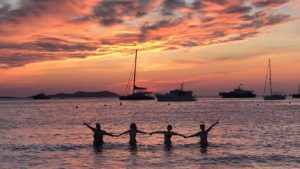 At least one of us is probably peeing in this photo Having experienced 0 other beaches in Ibiza, since we just went back to this one over and over, I am inclined to agree with Cocoon Man. But I would go one step farther. Not only is this beach ideal for cocooning, yoga, and sunset-watching (though, I hasten to add, it is not quite as great for sunrise viewing. Pro tip: sunrises don’t happen on the same side of the island as sunsets. Who knew?! We definitely should have), but it is also a great
 Friends who wee together stay together spot to pee.
For one, there’s the ocean. Always good for a sea-wee. But, if you are on this beach and don’t feel inclined to get half your body wet, there is also a handy rock outcropping just beside the shoreline, which conceals you from almost every viewpoint on the beach. Perfect for popping a squat!
- Gili Air
Gili Air is gorgeous. It takes anywhere from 5-16+ hours to get from there back to some semblance of civilization, which makes it the antisocial introvert’s dream destination and prime real estate for Italian grandmothers on the run for tax evasion.
It’s also just freaking beautiful. No photos we took were able to completely capture the view—white sand beaches lead down to a coral reef. Beyond the reef, the deep turquoise of the ocean against the backdrop of Lombok Island across the inlet and a volcano in the distant background make the whole scene look like a painting.
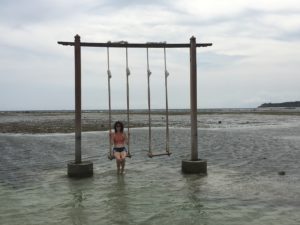 There’s even swings for post-pee celebrations! Wading into the shallow water to relieve our bladders (with some minor wincing because, pretty as it is, coral is not super fun to walk on barefoot) felt like peeing inside an Andrew Wyeth landscape. Move over Christina’s World, the next big thing in magical realist painting is Clare Peeing (named for the friend who peed the most frequently, though truthfully, this masterpiece could be named after any of us).
Anyway, I highly recommend this experience, even if the water can get a bit chilly in high tide.
- Melt Festival, Ferropolis, Germany
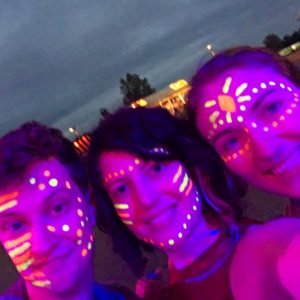 Fun AND hygienic! Let me set the scene: it is day 4 of a 20,000-person music festival. You’ve been camping here all weekend, in the middle of nowhere, dancing sweatily to bands. It’s 5am. The last act is still playing. You venture to the on-site toilets.
Not only are they clean as a whistle, but there is plenty of toilet paper, a cleaner sweeping up after you leave, and there is soap left.
Germany is the ideal location for a music festival. All music festivals should take place in Germany. In fact, all large crowded events where you may at some point need to use a toilet should be run by Germans. Times Square for New Year’s Eve planners, take note.
- Japan
Yes, I’ve reserved my number one pee-of-the-year spot for a place I haven’t been yet. Perhaps this is naively optimistic of me, always believing that the best is yet to come. But come on, the toilets in Japan are legendary. For years, I have heard tell of self-cleaning seats and toilets with speakers installed so that when you sit down, music plays just loud enough to cover up the sound of whatever you might be doing to that poor bathroom. Recently, I learned that some toilet stalls even have lovely paintings inside!
Regardless of whether the music will be to my taste or whether some of the stall paintings will be lackluster, I still believe it’s safe to look forward to peeing in Japan. More on this come December, when I can confirm the toilet sitch for myself.
In the meantime, happy peeing!
|
Mailing List Follow along as I write and travel around the world.
|
 I have always prided myself on being a fast writer. My speed allowed me to begin writing full-time before my debut novel was published, thanks to a series of ghostwriting and work-for-hire gigs. Freelancing is a fast-paced, insecure world. I never knew when or from where my next paycheck will be coming, so I tended to say yes to everything, even when my schedule was flooded. I told myself it was fine. I liked working that way.
I have always prided myself on being a fast writer. My speed allowed me to begin writing full-time before my debut novel was published, thanks to a series of ghostwriting and work-for-hire gigs. Freelancing is a fast-paced, insecure world. I never knew when or from where my next paycheck will be coming, so I tended to say yes to everything, even when my schedule was flooded. I told myself it was fine. I liked working that way. Last summer, I worked on my first-ever fiction podcast, created specifically for audio. With the Sara Shepard, no less! Season 1 of MEMORY LANE, a mother-daughter road trip thriller that we co-wrote, launched last month. This week it became a featured Apple Podcast. (The show is also available on Spotify and anywhere else you prefer to listen.)
Last summer, I worked on my first-ever fiction podcast, created specifically for audio. With the Sara Shepard, no less! Season 1 of MEMORY LANE, a mother-daughter road trip thriller that we co-wrote, launched last month. This week it became a featured Apple Podcast. (The show is also available on Spotify and anywhere else you prefer to listen.)




 It doesn’t come up often in the perfect Instagram shots, the #livelaughlove tags, the cutesy captions. Even when I’m talking to friends back home in person, recounting my trips, I hardly ever bring it up. It sounds too much like a humblebrag, a lucky person problem. It is. I get that.
It doesn’t come up often in the perfect Instagram shots, the #livelaughlove tags, the cutesy captions. Even when I’m talking to friends back home in person, recounting my trips, I hardly ever bring it up. It sounds too much like a humblebrag, a lucky person problem. It is. I get that. You get accustomed to missing ten people, none of whom have ever met or even heard of one another, at the same time—missing them so hard that “missing” barely encompasses the depth of it. It feels like being pulled in ten directions at once, until there’s nothing left over for you.
You get accustomed to missing ten people, none of whom have ever met or even heard of one another, at the same time—missing them so hard that “missing” barely encompasses the depth of it. It feels like being pulled in ten directions at once, until there’s nothing left over for you. Look, I’ll be real with you: I had no less than 3 panic attacks within the first 120 pages of this book. It’s terrifying. But it’s also, even more scarily, very well-researched and nuanced. It does not talk about our climate future in terms of big Day After Tomorrow-esque scenarios. It takes a realistic approach: who will be the hardest impacted (spoiler: those communities, countries and economic groups that are already struggling). What could a world with the minimal degrees of warming we should expect look like (it’s not great!). How commonplace will natural disasters like the California fires, the increasingly large hurricanes battering the East Coast, etc. be (very).
Look, I’ll be real with you: I had no less than 3 panic attacks within the first 120 pages of this book. It’s terrifying. But it’s also, even more scarily, very well-researched and nuanced. It does not talk about our climate future in terms of big Day After Tomorrow-esque scenarios. It takes a realistic approach: who will be the hardest impacted (spoiler: those communities, countries and economic groups that are already struggling). What could a world with the minimal degrees of warming we should expect look like (it’s not great!). How commonplace will natural disasters like the California fires, the increasingly large hurricanes battering the East Coast, etc. be (very). Come As You Are
Come As You Are Lesbian necromancers in space. That’s all the pitch you really need. This book was by turns hilarious, razor-edge-level witty, gut-wrenching, and downright ridiculous. I loved every fucking page, and to say I’m dying to get my hands on the sequel is an understatement.
Lesbian necromancers in space. That’s all the pitch you really need. This book was by turns hilarious, razor-edge-level witty, gut-wrenching, and downright ridiculous. I loved every fucking page, and to say I’m dying to get my hands on the sequel is an understatement. did not disappoint.
did not disappoint. Glitter. Faeries. Cannibalism. An extremely fucked-up world with even more fucked-up characters violently carving out space for joy and peace and love amidst the wreckage.
Glitter. Faeries. Cannibalism. An extremely fucked-up world with even more fucked-up characters violently carving out space for joy and peace and love amidst the wreckage.
 Girls of Paper and Fire by Natasha Ngan
Girls of Paper and Fire by Natasha Ngan ales: emotional, sexy, passionate ones, and level-headed, logical, Type-A ones.
ales: emotional, sexy, passionate ones, and level-headed, logical, Type-A ones. After a chronically ill computer geek narrowly avoids death, she decides to make a list of all the badass things she wants to do to in order to, well, Get a Life.
After a chronically ill computer geek narrowly avoids death, she decides to make a list of all the badass things she wants to do to in order to, well, Get a Life. Afterward, he’ll have to return home and take over his father’s estate. But before that, he’s determined to have as much fun drinking, gambling and romancing his way across the continent as possible. And if it gives him more time to flirt with his best friend and traveling companion, a boy he’s been hopelessly in love with for years, well, all the better.
Afterward, he’ll have to return home and take over his father’s estate. But before that, he’s determined to have as much fun drinking, gambling and romancing his way across the continent as possible. And if it gives him more time to flirt with his best friend and traveling companion, a boy he’s been hopelessly in love with for years, well, all the better. Everyone I’ve talked to lately, whether before, during or after my transcontinental move, keeps asking me why. “Why do you want to live in Lisbon?” I have a few different answers, but mostly I just wind up asking a different question altogether.
Everyone I’ve talked to lately, whether before, during or after my transcontinental move, keeps asking me why. “Why do you want to live in Lisbon?” I have a few different answers, but mostly I just wind up asking a different question altogether. Okay, fair enough, you may say, but that’s just because NYC is one of the priciest places anywhere. Good point.
Okay, fair enough, you may say, but that’s just because NYC is one of the priciest places anywhere. Good point. international flights for $20 sometimes. What. That’s what I paid to take a NJ Transit train like 1 hour into New York City), but there’s also (GASP) a functional train system. One that’s actually comfortable to ride. Okay, sure, it’s no Japanese bullet-train, but the sleeper cars are a million times comfier than trying to nap on the repurposed bus seats Spirit fills their planes with.
international flights for $20 sometimes. What. That’s what I paid to take a NJ Transit train like 1 hour into New York City), but there’s also (GASP) a functional train system. One that’s actually comfortable to ride. Okay, sure, it’s no Japanese bullet-train, but the sleeper cars are a million times comfier than trying to nap on the repurposed bus seats Spirit fills their planes with. Holy crap you guys.
Holy crap you guys.
 you like young adult fantasy with complex, badass heroines, dangerous magic, and a vividly-drawn alternate NY, you haaaave to read her
you like young adult fantasy with complex, badass heroines, dangerous magic, and a vividly-drawn alternate NY, you haaaave to read her 



















